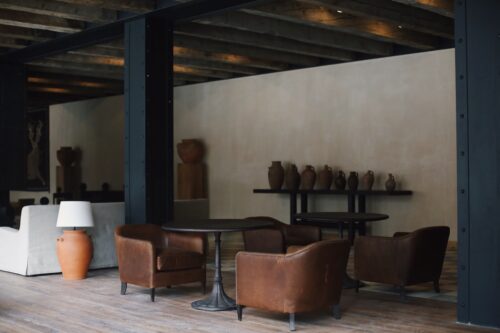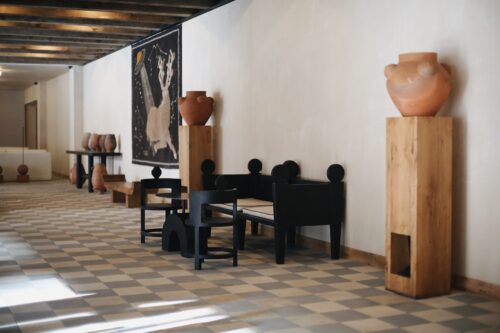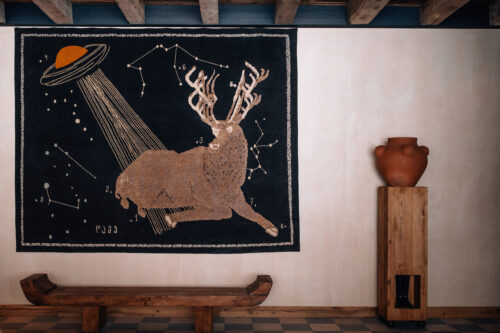TEXT Dzenana Mujadzic | erstmals veröffentlicht in CHAPTER №X »State of the art« – SoMMEr 2023/24
Die Zusammenarbeit von Nata Janberidze und Keti Toloraia beginnt bereits zu Studienzeiten an der Staatlichen Kunstakademie Tiflis und findet ihre Fortsetzung nach ihrem Abschluss 2007, als die beiden das erste weiblich geleitete Designstudio Rooms in Tiflis gründen. In ihren Arbeiten findet man nicht nur raffiniert umgesetzte Bezüge zu ihrem Heimatland Georgien sondern bekommt auch eine Idee davon, warum international immer mehr auf die Kreativszene des Landes an der Schnittstelle zwischen Europa und Asien geblickt wird.
Chapter In your creative thinking, you embrace the topics of ethnography as well as mythology. How has being from Georgia found practical ground in your work?
Rooms Our practice is mostly guided by intuition and observing our inner states. We frequently question our cultural heritage, drawing inspiration from various historical periods, going back in history as far as the ancient and medieval Georgian décor—that includes ethnography and mythology or late Soviet times. Translating these old motifs into a contemporary design language while reclaiming and recreating a new design identity is what we are interested in. This approach is reflected in our work in various ways—sometimes through shapes, carving techniques, colors, or sometimes simply through the energy and feeling they convey.

Chapter There’s a sculptural aspect to your work that gives public spaces a special grandeur, such as the monumental fireplace you did for ROOMS Hotel Kokhta in Bakuriani, Georgia. What can you tell us about this very special piece?
Rooms The fireplace is a reflection of the ancient concept of the so-called »middle fire«—a central hearth where households would gather for warmth, cooking, and comfort. We wanted to recreate this ritual by designing a monumental fireplace that would anchor an expansive space and serve as the central point where everyone can come together. The fireplace itself is a double-sided monumental construction composed of metal, characterized by a series of bas-relief archetypal symbols embossed onto metal sheets. Each symbol narrates a unique observation about the meaning of life, which could preferably also be read as a story.



Chapter What are the considerations behind the concept you yourself call »poetic brutalism« for the ROOMS Hotel Kokhta?
Rooms We were guided by the hotel’s mountainous surroundings and wanted to bring the essence of nature and its bliss into the interiors. Its meditative vibe is achieved through the repeated use of our sculptural objects. We wanted to create a space that feels both brutal and sculptural, yet poetic at the same time. Brutalism as an architectural style can be inherently rigid and almost soulless, so we wanted to bring lightness and softness to it. This approach evokes contradicting, clashing feelings—strong, raw, and feminine yet dreamy. A concept we often explore in our collectible objects as well.


Chapter In 2007, you established the first female run studio in Tbilisi. How has your collaboration evolved over the many years of working together?
Rooms We started our studio—Rooms—almost 20 years ago. Since then, it has been a never-ending exchange and a learning curve that continues to evolve harmoniously.

